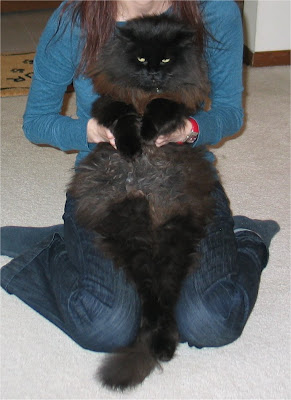In 2002 around the end of January my husband developed persistent dry cough. Thinking it was cold we tried usual remedies for a while.
Unfortunately it did not go away, not even changed to a milder, mucus-releasing stage commonly preceding recovery. His cough was especially draining in the mornings gradually calming down (or so we wished to believe) to the end of the day.
Unfortunately it did not go away, not even changed to a milder, mucus-releasing stage commonly preceding recovery. His cough was especially draining in the mornings gradually calming down (or so we wished to believe) to the end of the day.
At one point we decided to go to the doctor. My husband was put through a series of tests which confirmed nothing specific. The doctor suggested antibiotics but after they did not work, attributed the cough to some kind of allergy and prescribed a nasal spray.
We obediently purchased the remedy. At home I read its ingredients, which included something hormonal and got scared. I suggested he was not taking it. Instead we examined potential allergens in our household that were bought about the same time he started coughing. After several empty trials we singled out drier softening tissues. They were recommended by a friend who said they would make our bed sheets especially soft and smelling nice.
As soon as I stopped using these tissues my husband’s cough was gone.
It was a sign for us to start the transition toward less hazardous household cleaning products. However, for many reasons this was never our high priority.
Now I think that we’ve been lucky in this respect, because in parallel with our reluctant and slow chemical makeover the greater variety of less hazardous products appeared on the market and eventually these two processes met somewhere in the middle, where the price was right.
Now I think that we’ve been lucky in this respect, because in parallel with our reluctant and slow chemical makeover the greater variety of less hazardous products appeared on the market and eventually these two processes met somewhere in the middle, where the price was right.
We started buying more natural detergent and dishwasher liquid, then I returned to the old-fashioned baking-soda-and-vinegar cleaning solutions. And on one sunny spring morning all the harsh stuff that had still been in occasional use was moved out from the house and stored outside, in the garage.
While implementing these little improvements we did not give much thought to the fashionable trend of “going green” (I have a particular distrust to flashy concepts like “global warming” or “carbon footprint”). We were simply focused on what was good and healthy for us (and for our cats).
By the way, with heavy snow showers lately and remarkably low temperatures I did not hear much about global warming. Does it mean - we passed the fad?
Speaking of my house-cleaning reform, I was also trying to be less wasteful. My habits in this department had been formed in the 80s and 90s, when women in the Soviet Union were diligently saving and reusing disposable plastic bags (and, yes, sometimes washed and hang-dried them on the cord!)
Vendors in grocery stores and at food markets expected us to have our own packaging resources.
And no respectable working mother would have left her house in the morning without two or three neatly folded used bags in her (sometimes, quite fashionable) purse.
 |
This is a staged photo, and of the earlier era, but something like this... |
In America for a short period of time I was proudly discarding paper towels used as place mats for casual dinner thinking - this was a more civilized way. After realizing that I was American enough I returned to saving and reusing those of the towels that were still clean.
We learned to limit watering our lawn in the beginning of summer. It lets grass to develop strong root system able to thrive on less water later on. And we rarely turn on our conditioner in summer because our house is located and built so smartly (see “My American House”, if curious). It does not need much cooling.
...At this point I reread all the above and decided that my attempts at cleaning my space are far from impressive. I could've gone completely organic or entirely home-made, but I didn't. I might be too frugal, or just - too lazy. Then I asked myself,
"How clean is ...clean?"
...At this point I reread all the above and decided that my attempts at cleaning my space are far from impressive. I could've gone completely organic or entirely home-made, but I didn't. I might be too frugal, or just - too lazy. Then I asked myself,
"How clean is ...clean?"





